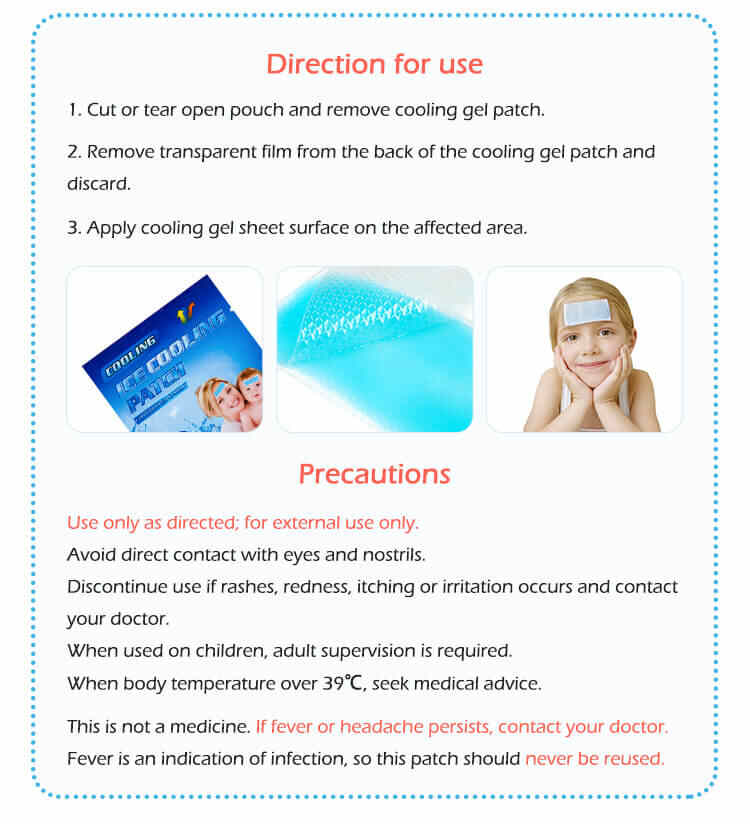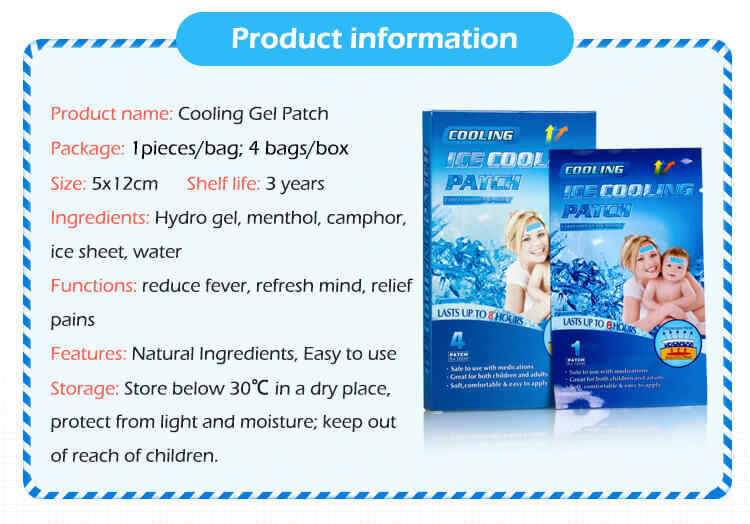Quality Control Secrets in Menthol Cooling Patches OEM Production
In the fast-growing wellness and healthcare sector, menthol cooling patches have become a global favorite. Their popularity stems from their ability to provide quick, soothing relief for fever, headaches, muscle fatigue, and sports recovery. As demand rises, more brands are entering the market with custom menthol cooling patches and private label menthol cooling patches.
However, success in this market depends not only on innovative product design but also on quality control (QC). Without strict QC measures, patches may fail to deliver consistent results, irritate the skin, or fall short of regulatory standards—damaging a brand’s reputation. This is why understanding the quality control secrets in menthol cooling patches OEM production is essential for businesses seeking reliable partnerships with a menthol cooling patches manufacturer or supplier.

Why Quality Control Matters in Menthol Cooling Patches OEM
Quality is not just a technical requirement—it is the foundation of consumer trust. When brands work with a menthol cooling patches OEM partner, they rely on the manufacturer to deliver safe, effective, and consistent products. QC ensures:
Product safety for children and adults alike
Consistency in menthol concentration, adhesive strength, and cooling duration
Regulatory compliance across different markets (FDA, CE, ISO, GMP)
Brand reputation protection through reliable performance
In short, QC is the silent driver of competitiveness in the menthol cooling patch industry.
Core Quality Control Secrets in Menthol Cooling Patches OEM
1. Rigorous Raw Material Testing
The foundation of a high-quality patch lies in its ingredients. Reliable menthol cooling patches manufacturers source only pharmaceutical-grade or food-grade menthol. Before production begins, raw materials undergo testing for:
Purity and concentration of menthol
Absence of harmful contaminants or allergens
Adhesive quality and skin compatibility
By ensuring raw material integrity, menthol cooling patches suppliers can guarantee safe end products.
2. Controlled Formulation and Menthol Concentration
One of the most critical QC areas is maintaining the right menthol level. Too high a concentration can irritate the skin, while too low reduces effectiveness. Advanced menthol cooling patches OEM facilities use precision dosing technology to control formulation consistency.
Custom formulations are also verified through stability testing to ensure they deliver cooling effects throughout the intended duration.
3. Adhesion and Skin Compatibility Testing
The adhesive layer is vital for patch performance. QC teams check for:
Proper adhesion that keeps the patch in place during movement
Easy removal without leaving residue
Hypoallergenic properties suitable for sensitive skin
This is particularly important when producing custom menthol cooling patches for children or people with delicate skin.
4. Microbiological and Safety Testing
Since patches are applied directly to the skin, safety is paramount. OEM manufacturers conduct microbial tests to ensure patches are free from bacteria, mold, or other harmful microorganisms.
Menthol cooling patches suppliers also run dermatological safety tests to confirm that patches cause no irritation, redness, or adverse reactions.
5. Packaging Integrity Checks
Packaging plays a critical role in maintaining patch effectiveness. Quality control includes:
Barrier testing to ensure packaging protects against moisture and air
Seal integrity tests to prevent contamination
Printing verification for accurate branding and instructions
For private label menthol cooling patches, packaging quality also directly impacts consumer perception and trust.
6. Stability and Shelf-Life Testing
Consumers expect consistent performance whether they use the patch one week or one year after purchase. QC teams conduct accelerated aging tests to verify product stability, ensuring menthol concentration, adhesive performance, and cooling effects remain intact throughout the shelf life.
7. Regulatory Compliance Audits
Global distribution requires compliance with multiple regulations. Reliable menthol cooling patches manufacturers perform regular audits to ensure:
GMP-compliant production processes
ISO 13485 quality system adherence
FDA or CE marking approvals for specific regions
These certifications guarantee that private label menthol cooling patches can enter international markets confidently.
8. Continuous Improvement Through R&D Feedback
The best menthol cooling patches OEM partners don’t stop at meeting minimum QC standards—they continuously improve. R&D teams analyze customer feedback and QC data to refine formulas, adhesives, and patch designs. This commitment to improvement strengthens long-term brand competitiveness.
Benefits of Strong QC for Brands
When a business partners with a menthol cooling patches supplier that prioritizes QC, they gain significant advantages:
Trustworthy products that encourage repeat purchases
Fewer product recalls, reducing financial and reputational risks
Market adaptability, with compliant products ready for global distribution
Premium positioning, as consumers associate quality with value
Strong quality control turns custom menthol cooling patches into powerful brand assets.
How Brands Can Ensure Their OEM Partner Meets QC Standards
Request Certifications – Confirm ISO, GMP, FDA, or CE approvals.
Audit Facilities – If possible, visit the manufacturer’s production site.
Ask About Testing Protocols – Verify how raw materials, adhesives, and packaging are tested.
Request Samples – Personally test patches for cooling effect, adhesion, and comfort.
Review Case Studies – Check how the menthol cooling patches manufacturer has delivered quality for other brands.
Choosing a transparent and experienced OEM partner is essential for ensuring QC is upheld at every production stage.
Case Example: QC Success in Private Label Menthol Cooling Patches
A wellness brand entering the European market collaborated with a certified menthol cooling patches OEM manufacturer. The OEM partner conducted:
Comprehensive microbiological safety tests
Custom formulation adjustments for sensitive skin
Packaging validation to meet EU labeling standards
As a result, the brand launched private label menthol cooling patches that met strict EU requirements and quickly gained consumer trust. This success highlights how QC directly translates into brand growth and competitiveness.
Conclusion
In the world of menthol cooling patches OEM production, quality control is not a hidden back-end process—it is the foundation of success. From raw material testing to packaging validation, every QC step ensures that the final product is safe, effective, and reliable.
By choosing an experienced menthol cooling patches manufacturer or supplier with strong QC systems, brands can confidently develop custom menthol cooling patches and private label menthol cooling patches that win consumer trust and achieve long-term market success.
For any brand aiming to thrive in the global wellness market, understanding and prioritizing QC is the real secret to staying ahead.
Related Questions and Answers
Q1: Why is quality control critical in menthol cooling patches OEM?
A1: QC ensures safety, consistency, and compliance, protecting both consumer health and brand reputation.
Q2: What certifications should a menthol cooling patches manufacturer have?
A2: Look for ISO 13485, GMP, FDA, and CE certifications for global compliance.
Q3: How do custom menthol cooling patches benefit from strong QC?
A3: QC ensures custom formulas are stable, effective, and safe for targeted consumers.
Q4: Can private label menthol cooling patches compete globally without QC?
A4: No, without strong QC, products may fail regulatory tests or lose consumer trust.
Q5: How can brands verify a menthol cooling patches supplier’s QC standards?
A5: By requesting certifications, reviewing QC protocols, and testing product samples.






